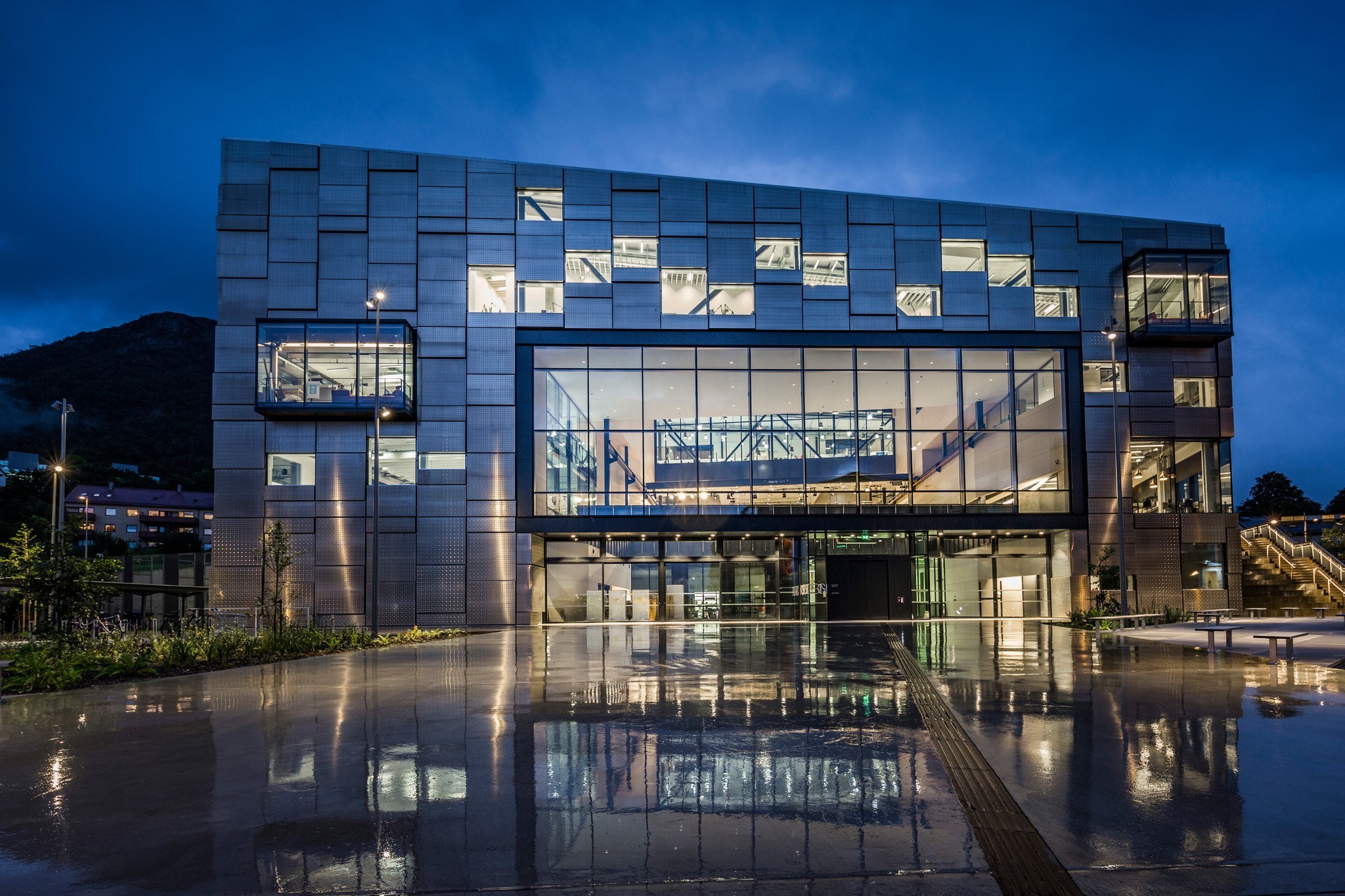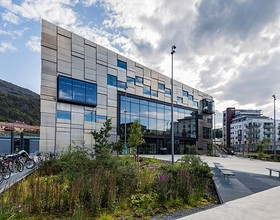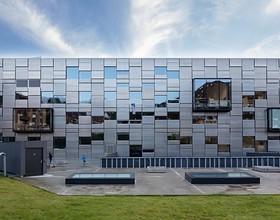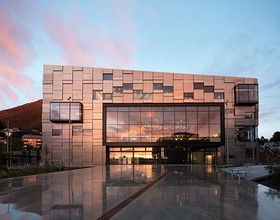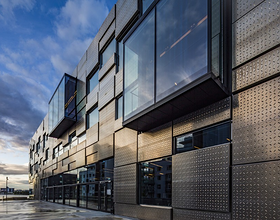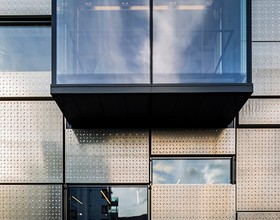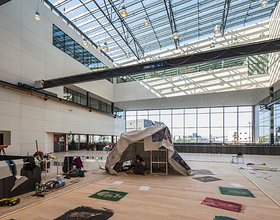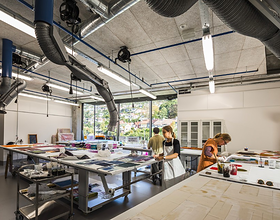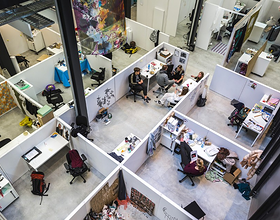UNIVERSITY OF BERGEN-FACULTY OF FINE ART, MUSIC AND DESIGN
-
October 11, 2017, marked the official opening of the Snøhetta-designed Faculty of Fine Art, Music and Design (KMD) in Bergen, Norway. Replacing the former Bergen Academy of Art & Design (KHiB), the new KMD has undergone a historic fusion, assembling the previously scattered faculty buildings under one roof.
This new 14,800 m2 cross-disciplinary faculty is now the second largest cultural building in Bergen.
The building is organized along two axes, one internal, dedicated to students and staff, and one external, open to the public. Under the KMD roof, these axes cross each other in the 1,300 m2 and 19,000 m3 project hall, one of the most prominent and dominant features of the building.
The interior palette is kept low key, providing studios, student work areas, and other spaces with a neutral and durable environment suitable for art and design work. Painted gypsum fiberboards provide a smooth, robust and a visually subdued surface, ideal for screws, plugs, and nails supporting artwork.
These materials used indoors are extremely robust and have good light reflecting, soundproofing, and acoustic qualities.
While most of the floors are covered in vinyl, the floor of the first level is covered by slab and porous concrete. The second floor of the Project Hall is covered by a beautiful and robust pine wood block flooring. When a material first is introduced into the material palette, it has been reused consequently throughout the building. Following this philosophy, the same vinyl which is used for flooring is also used to protect wall corners, as a continuous baseboard between floors and walls, and as wall cladding in all bathrooms.
The pre-fabricated raw aluminum elements that clad the building’s exterior compose a puzzle of depth, breadth and length. 900 varied sized seawater-durable crude aluminum elements are protruding from the wall at varying distances, only paused by large cantilevered box-shaped windows punctuating the rhythm of the aluminum surface. The metal cassettes shift according to the weather conditions of the west coast and reinforces the metallic effect of the aluminum.
Durability and robustness have been keywords for all decisions made throughout the façade design process. The rainy and sometimes stormy coastal climate demands all exterior materials to not only withstand harsh conditions, but to weather in a way that highlights their unique qualities over time. The crude aluminum surfaces will gradually age and naturally oxidize, heightening the variations in colors and textures.
Photo credits: Snøhetta.
1870 Projects

